a series of 1/72 kits
1/72 scale kits of the F-104 Starfighter: ESCI / ITALERI / REVELL
... continued from previous page...
REVELL F-104 (later kit version)
F-104C
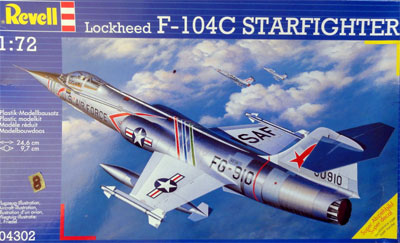
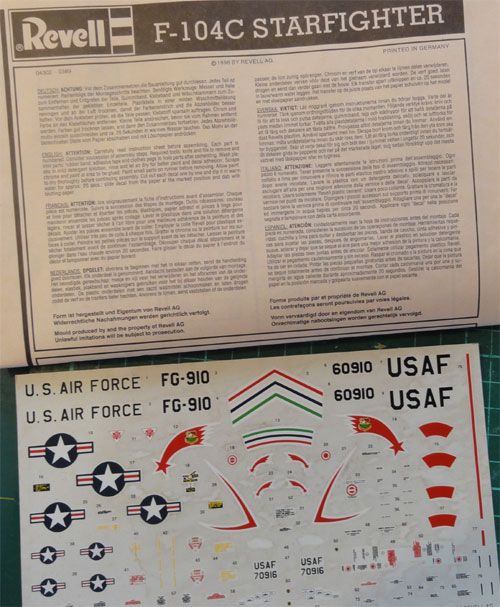
This is a different kit as the older ESCI / Revell kits.
It is rather basic kit. Cockpit is very sparse and the canopy of one piece is rather thick. The windscreen looks a bit too small and its frame should be a little more aft to get a "smaller" opening canopy. If you want to open canopy, you will need to cut the canopy in 3 parts with a fine razor saw. Try to put the razor saw a bit aft of the forward frame.
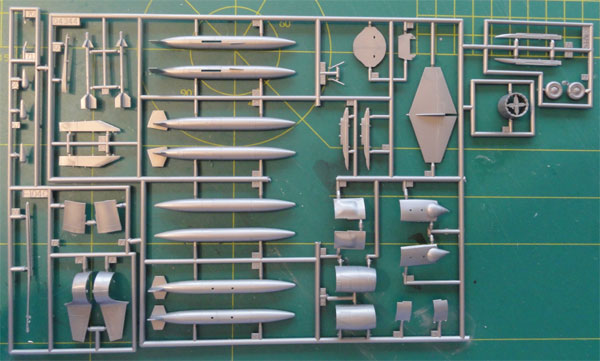
"F-104 C parts"
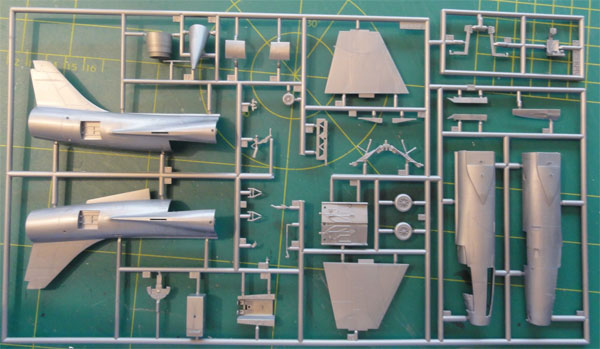
Parts are correct for the -C with the small rudder type tail and an "early" Lockheed C2 ejection seat. Also the wheel doors are the correct with "thin" correct good wheels. The Lockheed C seat is correctly in this kit and the instrument panel looks nice with raised details. Two styles of external fueltanks are included but seem to have a too small diameter (if you can replace them with later Hasegawa tanks). Small ECM fairings are also included (parts 67 + 80) but these are often not seen on a F-104C, only I believe Canadian Armed Forces aircraft. (Some Royal Netherlands AF Starfighters also have some ECM fairing retrofitted later on). The fuselage is in 6 !! parts and a loose nose radar cone.
Decals are provided for:
(1) F-104C USAF 479 TFW George AFB,
1963 in a high visibility scheme;
(2) F-104C USAF 8 TFW Udorn, Thailand
in a Vietnam camouflage scheme;
Airbrake parts are reversly numbered
(29-30) but nicely seperate parts and can be set in a open position.
![]()
Two kits were made of this
F-104C Starfighter kit. Assembly is straight forward, but be carefull when
aligning the wheelbay "roof" part 32 inside the fuselage. The fit of the
rear tail parts, intakes and forward tail required some putty and filling.
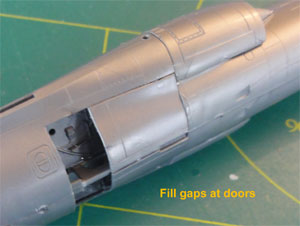
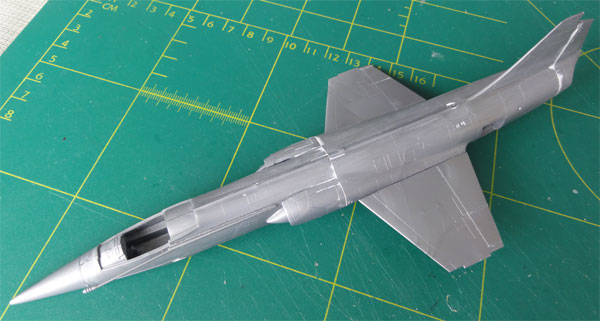
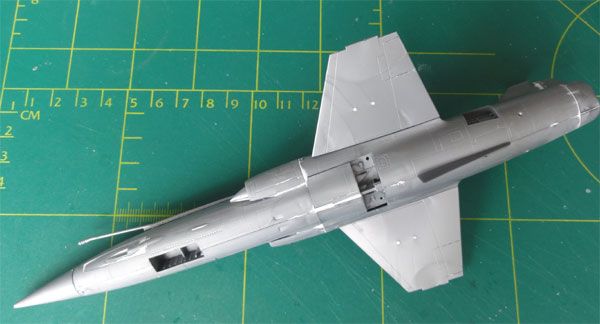
...
![]()
(1) USAF Vietnam markings
using this Revell kit no.04302 decals of USAF
8 TFW based Udorn in Thailand end 1966; I added the left forward
fuselage tankboom, the "long type". A picture can be found of this plane
in the "Squadron Signal In action" book, page 21. The type was not very
well suited for its role during Vietnam ops.
Colours that were airbrushed are Gunze
Sangyo acrylics:
FS34102 green H303;
FS30219 brown H310;
FS34079 dark green H309;
FS36622 grey-white lower surfaces
H311;
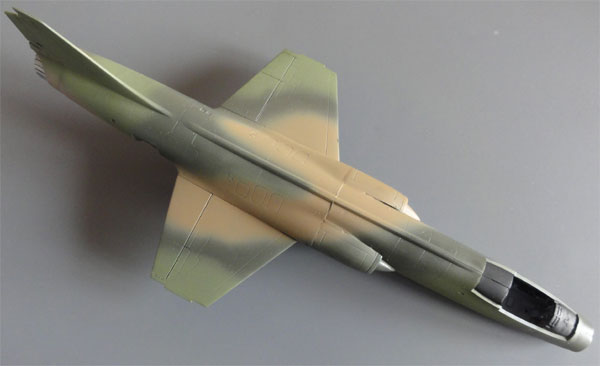
Decals were applied after a
gloss coat of varnish using Johnson
Future / Pledge with the airbrush. After decals were applied, a semi-matt
varnish coat was applied. This was achieved by again Future/Pledge but
with 15% mixed in Tamiya X-21 acrylic flat base.
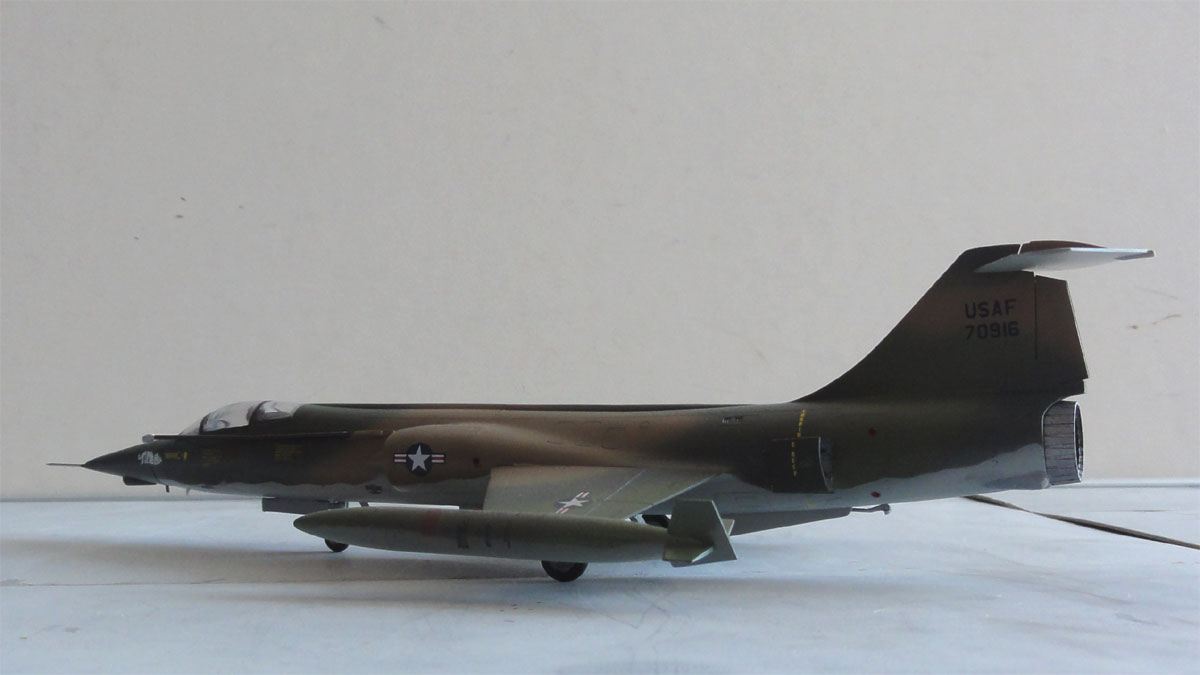

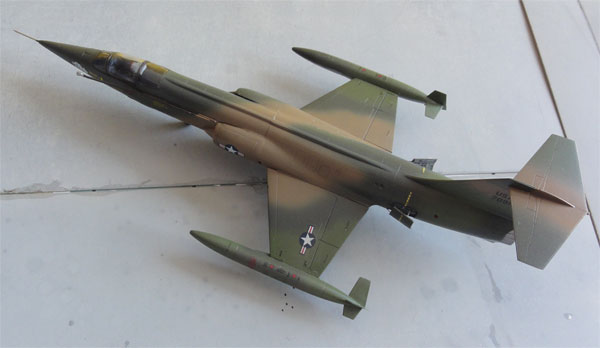
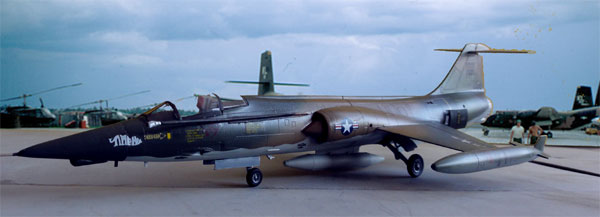
(2) USAF high visibility scheme, and I used a Microscale Set (258 ? ) I had for F-104C "really George". It has a very attractive scheme and has white wheel rims and white wings. This aircraft was named "Really George" because its home base would be the 479th TFW at George AFB, California and was flown by Wing Commander Col. George Laven Jr. in 1963.
The canopy will be set closed.

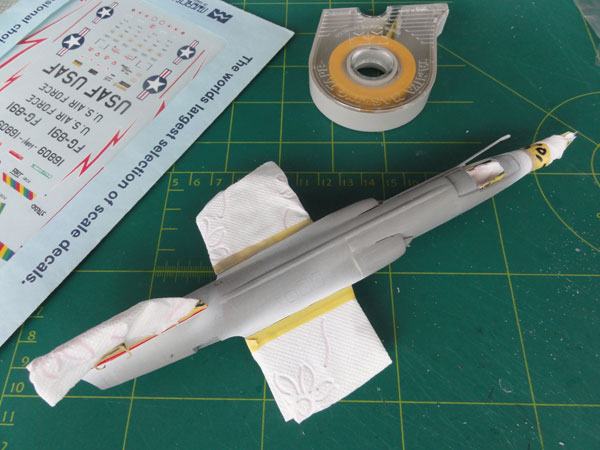
Colourfull markings are provided,
even for the pitot tube! A red tail was airbrushed with the white. The
wheel tyres have a white trim.
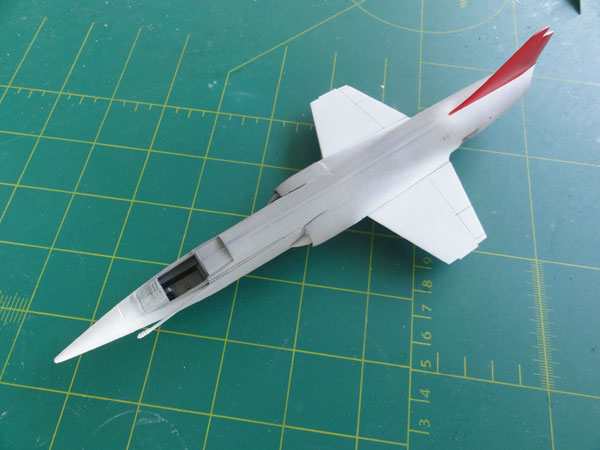
Next, an ALCLAD II Aluminium
metallic finish was airbrushed over a gloss black undercoat.
Decals were applied and some needed loads of decal softener (DACO) to fit, such at the fueltank tips.
After that the model coat a gloss Future/Pledge coat and this is the end result:
 .
.
..
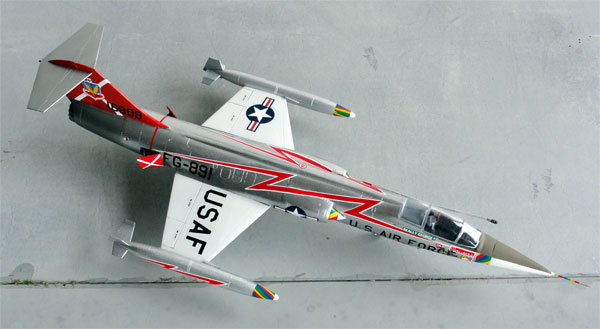
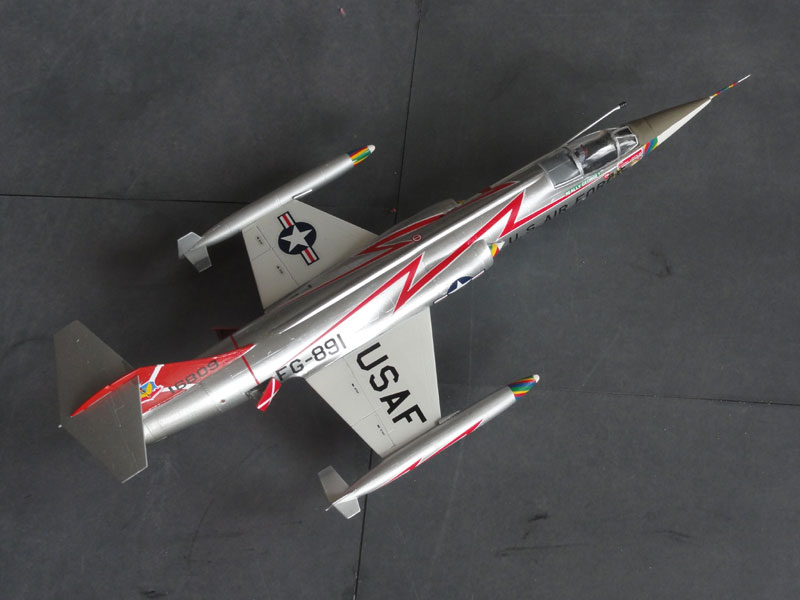
.
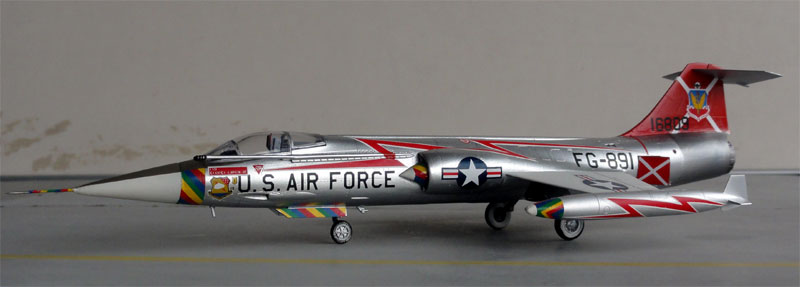
Yes, IT IS REALLY GEORGE!
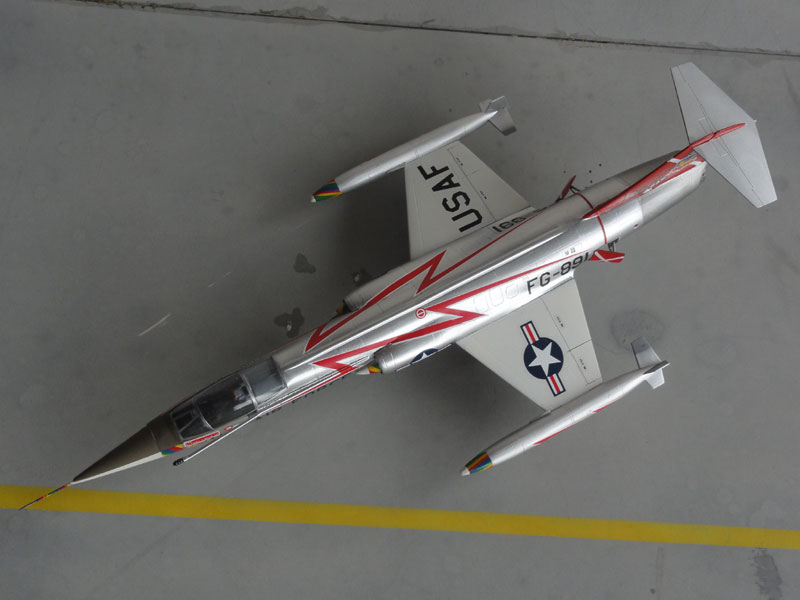
![]()
Revell F-104G
(later kit issue)
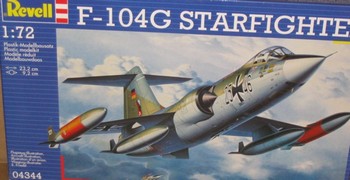
With some extra parts as the same
F-104C kit it later appeared as a F-104G in a Revell or even Monogram
boxing:

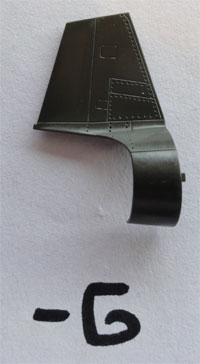
The parts layout shows here the parts
(with same ones as for the F-104C with small rudder and the old Lockheed
seat) and the updated parts (darkened) for the F-104G with the large rudder
and Martin-Baker ejection seat.
Three decal schemes are in the kit
of camouflaged West German Luftwaffe F-104G with lower grey surfaces:
1/ JaBo G32 at Lechfeld, 1976,
2/ JaBo G36 Rheine,
3/ interceptor of JG 74 , Neuburg
1973
The assembly of the fuselage (6+1 parts) required putty and filling! The wheel doors are the correct bulged type (the other parts for the -C are still there for the "thin" wheels).
The external fueltanks (59,60,61,62) are different as in the -C it and seem to have a TOO small diameter. On the single part canopy (parts 51) on the windscreen often an Infra red sensor is seen on later F-104G's, this sensor is missing. And as these are same parts, the canopy has the same error as described above for the F-104C. The windscreen looks too small.
If you want to show the cockpit interior with canopy open, you will need to cut the canopy in 3 parts with a fine razor saw.
Airbrake parts are reversly numbered (29-30) but nicely seperate parts and can be set in a open position.
A F-104G was made in Royal Netherlands AF (KLu) markings. I had several Dutch Decalsets such as set no.72069. This model is of KLu F-104G with code "D-8312" with white wings and white airbrakes of 312 squadron at Volkel AFB, The Netherlands.
Canopy will be kept closed and no
fueltanks are fitted here.
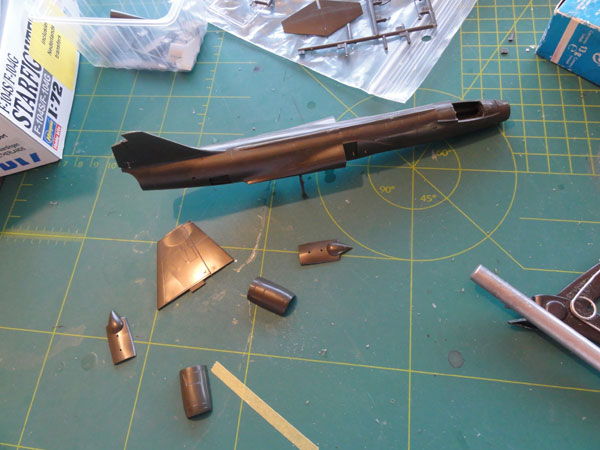
Decals were applied after a
gloss coat of varnish using Johnson
Future / Pledge with the airbrush. After decals were applied,
a semi-matt varnish coat was applied. This was achieved by again Future
but with 15% mixed in Tamiya X-21 acrylic flat base.
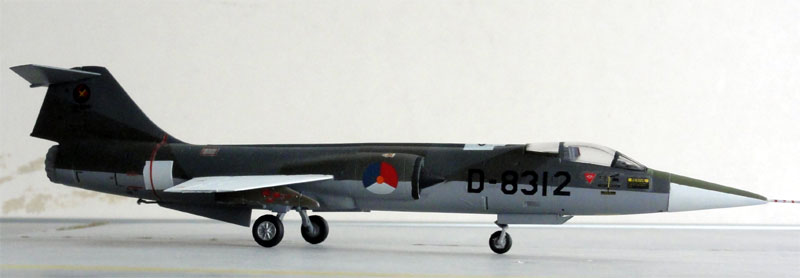
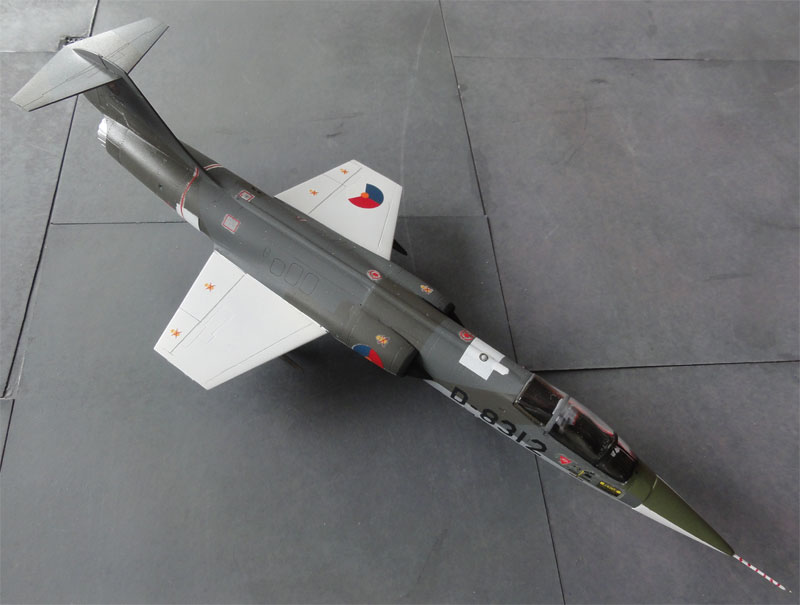

Note the white wing and white airbrakes.
Front windscreen looks a bit too small. Still some silvering unfortunately,
so please do apply plenty of gloss varnish before decalling the model.
Apply typical at least 3 coats!.
![]()
Back to 1/72 Models.......

(c) Copyright Meindert "designer"/ All rights reserved. Your comments are welcomed by webmaster
Created this page
August 19, 2014